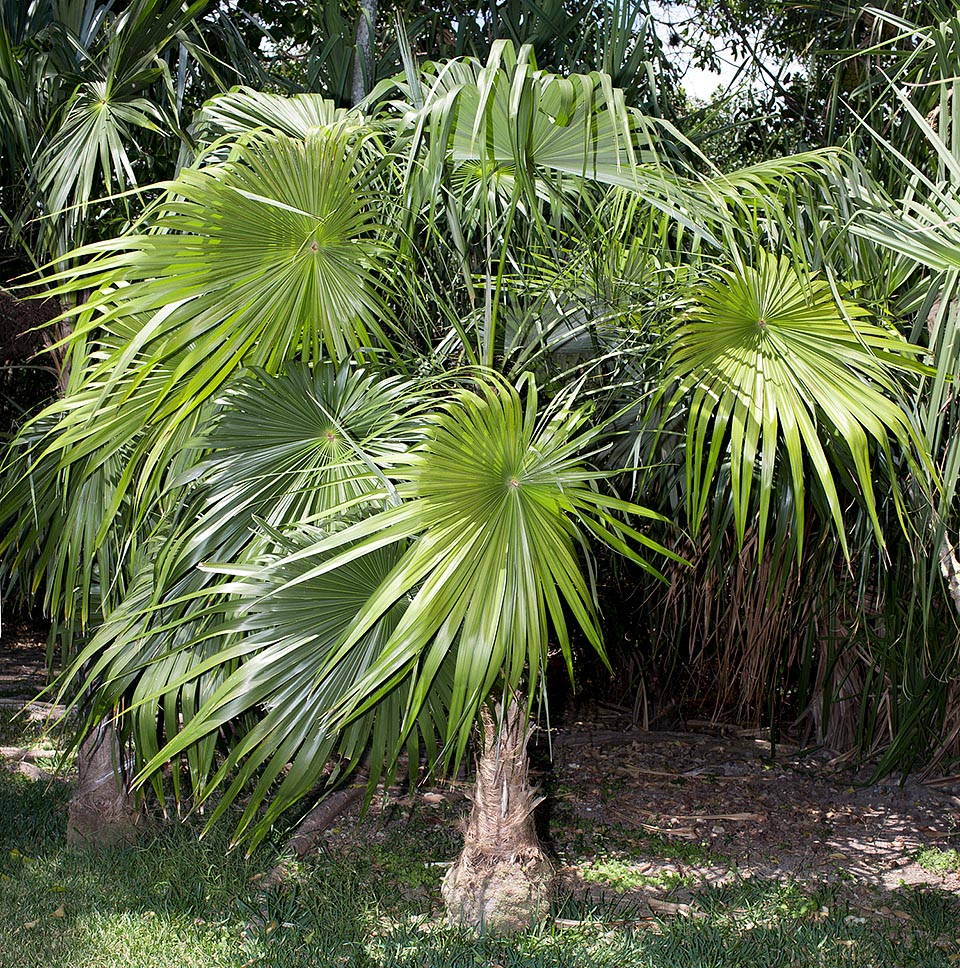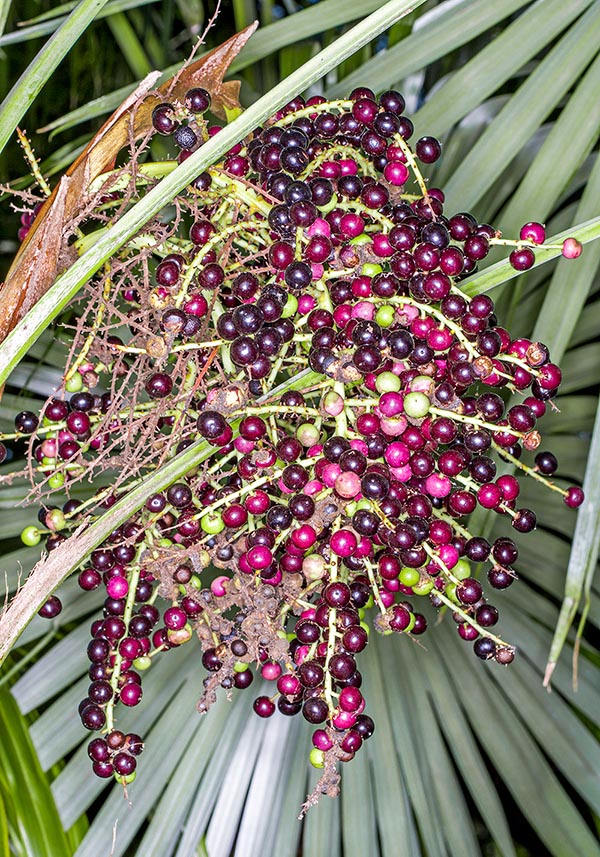Family : Arecaceae

Text © Pietro Puccio

English translation by Mario Beltramini

Native to the Virgin Islands and Puerto Rico, Coccothrinax alta can be 15 m tall. Fast growth, good resistence to saltiness and very decorative leaves © Giuseppe Mazza
The species is native to the Virgin Islands and Puerto Rico where it grows in the costal thickets on rocky calcareous soils, from the sea level up to about 400 m of altitude.
The generic name comes from the combination of the Greek term “κόκκος” (coccos) = berry and of the name of the genus Thrinax,which these plants resemble; the specific name is the Latin adjective “altus, a, um” = high, with obvious reference.
Common names: broom palm, Puerto Rican thatch palm, silver palm, silver thatch palm, tyre palm (English); palma de abanico, palma de escoba, palma plateada (Spanish).

The 0,5-1,2 cm fruits, with only one cerebriform seed, are globose, blackish purple when ripe © G. Mazza
The Coccothrinax alta (O.F.Cook) Becc. (1908) is an unarmed monoecious species, up to about 15 m tall, even if in cultivation it keeps lower, with solitary stem, flexible, with a diameter of 10-15 cm that reduces gradually in proximity to the top, of greyish colour on which are visible the traces of the fallen leaves spaced of 3-5 cm.
The leaves, on a petiole 60-90 cm long and 1,2-1,5 cm broad, are palmate, almost orbicular, 70-110 cm broad, of dark green colour above, covered by a thin silvery white tomentum below, incised in about 40 linear-triangular segments with drooping bifid apex, at the centre 55-65 cm long and 2,5-3,6 cm broad, united at the base per about 1/3 of the length. The foliar base is provided at the margins of thin pale brown fibers, thickly arranged in two layers, wrapping the stem in the youngest part; the hastula (appendage placed in the point of insertion of the foliar lamina with the petiole) is of roundish shape, 1,2-2 cm long, of yellow colour.
Inflorescences between the leaves (interfoliar), 40-60 cm long, ascending, curved in fruit, ramified with 3-10 primary spaced ramifications and of decreasing length towards the apex, 7-8 cm long the lowest, bearing hermaphroditic flowers, on short pedicel, of pale yellow colour. The fruits are globose, of 0,5-1,2 cm of diameter, of blackish purple colour when ripe, containing only one cerebriform seed of 0,3-1 cm of diameter.
It reproduces by seed, previously kept in water for three days, in draining loam maintained humid at the temperature of 26-28 °C, with germination times starting from one month.
Species with relatively fast growth, that distinguishes from the congenerous species due to the height that it may reach and the thin and flexible stems that render it a subject of great landscape value. Cultivable in tropical and subtropical climate zones and, marginally, warm temperate, where it can resist when adult to occasional decreases of temperature just inferior to 0 °C for short times. It grows in full sun as well as in filtered sunlight and is not particular about the soil, even if poor, provided perfectly draining, with preference for the calcareous rocky ones. Well rooted it can resist for long periods the drought, even if it takes advantage of regular watering in the zones characterized by seasonal climates with long warm and dry summers. Moreover, it stands the salty winds, hence can be utilized in gardens close to the sea.
The leaves are utilized as cover of rural dwellings and for realizing mats, bags, brooms and other common use handicrafts.
Synonyms: Thrincoma alta O.F.Cook (1901).
